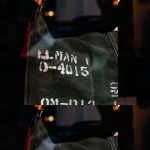In creative fields like design, art, writing, architecture, or marketing, clothing is more than just a wardrobe choice—it’s a form of self-expression and a subtle language of its own. Unlike traditional corporate settings dominated by suits and ties, creative professions celebrate individuality, experimentation, and personal flair. Dressing well in these spaces means striking the perfect balance between professionalism and creativity, projecting confidence while staying true to your artistic identity. Here are 10 fashion tips every creative professional should know.
10 Fashion Tips for Creative Professionals
1. Understanding the Culture of Your Creative Field
Creative professions encompass a broad spectrum of industries, each with its own unspoken dress codes and visual language. Tech startups, for example, often favor relaxed, streetwear-inspired attire, where hoodies, sneakers, and casual layering are perfectly acceptable. Design studios or advertising agencies may lean toward eclectic, artsy ensembles, encouraging bold colors, mixed patterns, or statement accessories. Understanding the culture of a workplace is crucial; subtle observation of colleagues’ attire, client interactions, and meeting environments provides insights into what is considered appropriate.
Dressing in alignment with workplace norms doesn’t require sacrificing creativity. Instead, fashion can serve as a tool to communicate professionalism and competence while subtly signaling individuality. Selecting pieces that feel authentic yet polished allows for a balance between conformity and self-expression, ensuring that attire supports credibility and builds trust without diminishing personal style. In creative fields, this balance often becomes a silent language, signaling both skill and cultural awareness.
2. Embracing Personal Style
Personal style is one of the most powerful tools in a creative professional’s arsenal. Wardrobes serve as a visual canvas for self-expression, allowing bold prints, distinctive textures, and statement accessories to become signature elements of an individual’s look. Layering unexpected pieces, combining vintage finds with contemporary staples, or integrating bright colors and unconventional silhouettes can demonstrate originality and flair while maintaining a professional edge.
In industries driven by innovation, personal style is more than fashion—it conveys confidence, individuality, and a willingness to take risks. Thoughtfully curated outfits can tell a story, reflect creative thinking, and leave a lasting impression on colleagues, clients, and collaborators. When executed with intention, personal style communicates that creativity is not only a professional skill but also an intrinsic part of identity, reinforcing credibility while celebrating originality.
If you like, I can continue elaborating on points 3 and 4 to complete
3. Functionality Meets Aesthetic
Creative professions often demand mobility and flexibility, whether moving between a studio, office, or client site, or spending long hours on hands-on projects. Clothing that prioritizes comfort and practicality becomes essential, without compromising style. Versatile trousers with stretch, breathable fabrics, and shoes that support long days while remaining polished allow for seamless transitions between tasks. Layered outfits with adaptable jackets or lightweight cardigans provide both style and utility, accommodating temperature changes and impromptu meetings.
Functional accessories further enhance efficiency without sacrificing aesthetic appeal. Minimalist yet distinctive jewelry, structured bags with compartments, and multipurpose outerwear can elevate an outfit while meeting the practical demands of a busy, on-the-go lifestyle. In creative environments, the ideal wardrobe marries function and visual interest, demonstrating that practicality and style are not mutually exclusive but complementary tools for professional expression.
4. Blending Professionalism with Creativity
While creativity is highly valued, professionalism remains essential, particularly in client interactions, presentations, or public-facing roles. Infusing classic wardrobe elements—such as tailored blazers, structured shirts, and neutral footwear—with personal touches, like unexpected color combinations, artistic patterns, or statement accessories, allows for a polished yet individual look. This balance ensures that outfits convey respect for colleagues, clients, and the profession while reflecting a unique creative identity.
The key lies in subtlety and intentionality. Professional elements provide a visual foundation that communicates competence, while creative accents express individuality and originality. By carefully integrating these aspects, wardrobes can become a strategic tool, signaling both skill and personality. Style becomes a language that communicates credibility, confidence, and innovation without diminishing authenticity or overshadowing professional responsibilities.
5. Sustainable and Thoughtful Fashion Choices
Sustainability has emerged as a defining consideration in contemporary fashion, and creative professionals often lead the way in adopting mindful wardrobe practices. Choosing vintage, upcycled, or ethically produced garments demonstrates both environmental responsibility and an eye for distinctive style. Timeless staples, such as well-tailored blazers, classic denim, and versatile footwear, serve as foundational pieces that can be styled in multiple ways, reducing the need for constant consumption while maintaining a polished appearance.
Beyond environmental impact, these fashion choices signal sophistication, awareness, and intentionality—qualities that resonate deeply in creative industries. Incorporating thoughtful fabrics, supporting ethical brands, or experimenting with second-hand finds communicates a commitment to both design integrity and cultural consciousness. This approach transforms clothing from mere utility into a reflection of values, demonstrating that creativity can extend beyond aesthetics to create a sustainable, mindful lifestyle. In essence, style becomes a medium for expressing identity, ethics, and professional discernment simultaneously.
6. Experimentation and Evolution
Creative professions thrive on innovation, and wardrobes can reflect the same spirit of adaptability and exploration. Experimenting with new silhouettes, bold color combinations, or unexpected textures allows clothing to become an extension of professional identity, signaling openness to ideas and a willingness to take risks. Mixing unconventional pieces, layering in surprising ways, or integrating statement items can transform everyday attire into a showcase of originality and creative vision.
Wardrobes should evolve in tandem with professional growth, reflecting shifts in role, interests, and personal style. Periodically reassessing clothing choices encourages relevance, inspiration, and alignment with the evolving industry landscape. Experimentation is not about following trends unthinkingly; it’s about curating looks that communicate curiosity, confidence, and adaptability. In this way, fashion becomes both a tool and a narrative, documenting professional development and creative evolution while leaving room for continued exploration and self-expression.
7. Accessories and Statement Pieces
Accessories have the power to elevate even the simplest outfit, turning clothing into a form of storytelling. Artistic jewelry, custom-made scarves, unique hats, or bold eyewear can reflect personality, signal creativity, and communicate individuality without the need for extravagant attire. In creative fields, such pieces often serve as visual signatures, allowing professionals to convey a personal brand through subtle yet impactful details.
Statement accessories are particularly valuable in professions where self-expression and visibility matter, such as photography, illustration, fashion design, or creative direction. A distinctive necklace, an artfully designed bag, or a signature hat can become instantly recognizable, sparking conversations and leaving a lasting impression. Beyond aesthetics, accessories offer versatility, allowing outfits to adapt to different occasions while reinforcing identity and confidence. Thoughtfully curated, they transform clothing into a multidimensional canvas that balances function, style, and professional storytelling.
8. Dressing for Confidence and Presence
Dressing in creative professions is less about adhering to rigid rules and more about cultivating confidence and a commanding presence. Clothing choices influence not only how others perceive professionalism but also how energy, focus, and creativity are experienced throughout the day. Outfits that strike a balance between comfort, style, and personal expression convey a natural sense of ease while signaling competence and intentionality.
When attire aligns with both personal and professional values, it becomes an extension of creativity, projecting individuality without undermining credibility. Thoughtfully chosen pieces—whether statement accessories, tailored staples, or sustainable items—can enhance mood, reinforce self-assurance, and support productivity. In this way, fashion serves as a tool for empowerment, enabling creative professionals to make a lasting impression, navigate their environments with authority, and stand out in a field where originality and confidence are essential.
9. Advanced Tips for Creative Professionals
For those looking to elevate their wardrobe strategy, mixing high and low fashion offers a distinctive approach. Pairing designer pieces with thoughtfully sourced thrifted or vintage finds creates a curated, individualized look that communicates both creativity and savvy. This blend demonstrates resourcefulness while allowing signature style to shine through, proving that fashion is not just about labels but about intentional storytelling.
Understanding color psychology can further enhance visual impact. Bright, energetic hues like yellows, reds, or oranges can inspire optimism, creativity, and energy, making them ideal for collaborative or brainstorming sessions. In contrast, muted tones such as navy, olive, or taupe convey sophistication and authority, lending credibility during client meetings or presentations.
Investing in multifunctional pieces maximizes efficiency without sacrificing style. Versatile jackets, shoes, or bags that easily transition from studio work to client interactions save time while maintaining a polished appearance. Documenting a signature wardrobe by photographing favorite outfits helps create consistency in personal branding, making it easier to replicate impactful looks and refine style over time.
Finally, adaptability is key. Creative professionals benefit from having “client-ready” variations of everyday outfits, ensuring that casual studio wear can be quickly elevated to a polished, professional look without compromising individual style. These advanced strategies enable wardrobes to serve as both practical tools and visual extensions of one’s creative identity, thereby enhancing confidence, presence, and professional impact.
10. Optional “Lookbook” Concept for Readers
To make the guide highly actionable, a visual lookbook can provide concrete inspiration that translates theory into practice. Featuring 25 to 30 curated outfits, the lookbook caters to a diverse range of creative professionals, including photographers, designers, illustrators, and content creators. Each ensemble can demonstrate how to combine comfort, functionality, and personality while maintaining a professional edge.
Seasonal styling guidance can highlight fabric choices, color palettes, and layering techniques that adapt to changing weather conditions, studio environments, or client meetings. Accessory pairings can show how jewelry, scarves, bags, and eyewear can elevate outfits, creating cohesive and memorable looks. The lookbook can also include variations tailored to different professional scenarios, such as client presentations, collaborative studio sessions, or creative events.
By transforming the guide into a magazine-style visual reference, readers gain an immediately applicable resource for making informed daily dressing decisions. The lookbook approach bridges inspiration and practicality, offering a concrete roadmap for expressing creativity, maintaining professionalism, and developing a consistent, signature style in any creative field.
The Power of Style in Creative Careers
Dressing for creative professions is about more than fashion—it’s a tool for storytelling, personal branding, and professional presence. By striking a balance between comfort, functionality, creativity, and professionalism, creatives can project confidence and individuality every day. Clothing serves as a medium for self-expression, subtly communicating values and inspiring both yourself and others in your industry.


